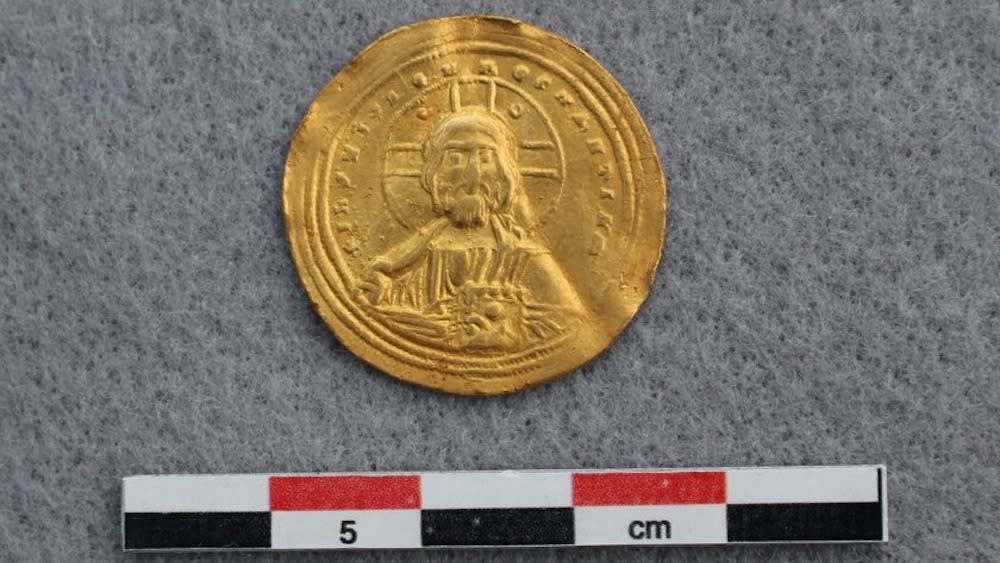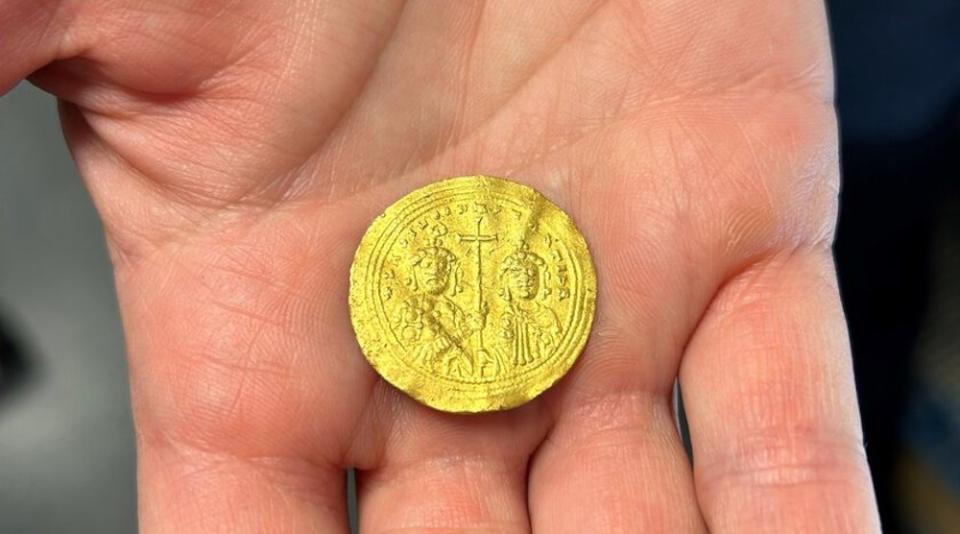Byzantine gold coin with 'face of Jesus' unearthed by metal detectorist in Norway

- Oops!Something went wrong.Please try again later.
A metal detectorist discovered a 1,000-year-old gold coin depicting Jesus Christ while exploring the mountains in Vestre Slidre, a municipality in southern Norway.
Known as a "histamenon nomisma," this type of small coin was first introduced around A.D. 960. It shows Jesus holding a Bible on one side and the images of Basil II and Constantine VII, two brothers who both ruled the Byzantine Empire, on the other, according to a translated statement.
The western half of the Roman Empire collapsed in 476, while the Byzantine, or Eastern Roman Empire, continued on for another millennium.
Related: 7,000-year-old coin depicting Jesus and medieval king discovered in Bulgaria
Archaeologists think the coin was minted sometime between 977 and 1025, during the brothers' reign, based on three dotted lines that circle the coin's border — a design element commonly used during that time period. The artifact also contains two inscriptions. The first, written in Latin, reads, "Jesus Christ, King of those who reign," and the second, in Greek, says "Basil and Constantine, emperors of the Romans," according to the statement.

However, researchers don't know how the coin wound up on the mountainside. They speculated that it may have belonged to Harald Hardrada, also known as Harald III, who ruled Norway from 1045 to 1066. Before becoming king, Harald III served as a guard for the Byzantine emperor; it was common practice for guards to get permission to "loot the palace after an emperor's death," according to the Miami Herald.
RELATED STORIES
—4,000-year-old tomb discovered in Norway may contain region's 1st farmers
—'Gold find of the century': Metal detectorist in Norway discovers massive cache of jewelry
—Viking sword from warrior's grave unearthed in family's yard in Norway
It's possible that the coin eventually was used as part of a dowry for Harald III to marry the daughter of Prince Yaroslav (also known as Yaroslav the Wise) of Kyiv, in what is now Ukraine. It also may have been used as a form of trade, according to the statement.
Archaeologists plan to return to the mountain site in 2024 to conduct further excavations.

